Five days from now, I will be running my 2nd marathon – the 26.2 with Donna! There will be a lot of celebratory events all weekend, including an exclusive run with the marathon founder, Donna Deegan, and Joan Benoit Samuelson, the first-ever women’s Olympic marathon champion. I was telling my dad about this run and it inspired him to write this post about women and the history of marathons. Enjoy! – Sharon
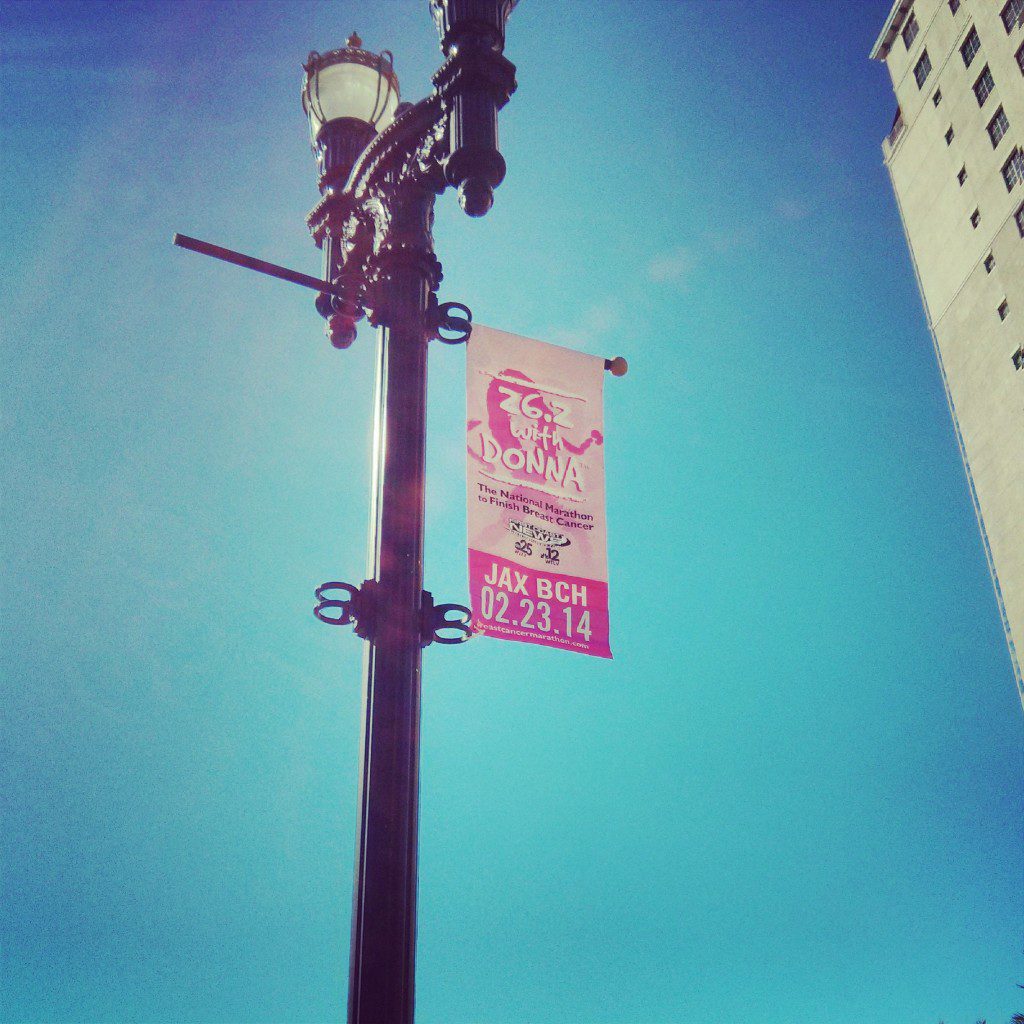
A Brief History of Marathons and Women
Every year thousands of women compete in one or more Marathon races. I wonder how many of them know the history that made this possible. Prior to 1967 no women had ever officially competed in a marathon race. It was thought to be too strenuous for the female anatomy.
There was an iron-clad rule that survived unquestioned for decades: “no women shall run in the Boston Athletic Association (BAA) Marathon.” In 1966 Roberta Gibb unofficially ran the Boston Marathon with a time of 3:21. The following year Kathrine Switzer became the first official female entrant. When she submitted her application, she listed her name as K. V. Switzer (which was the same way she signed her bylines for the articles she wrote for her school newspaper). She began the race running with her coach Arnie Briggs, her boyfriend Tom Miller (a 235-pound ex–All American football player and nationally ranked hammer thrower), and another runner from her college’s cross-country team. Around the 4 mile mark the race director, Jock Semple, noticed that a woman was running in his race and he tried to physically remove her from the race and pull her running bib number off her sweat shirt. Kathy’s boyfriend responded by knocking Semple to the ground. Kathy and her running group continued running, finishing in a time of 4:20. Semple got his revenge by disqualifying Kathrine from the race.
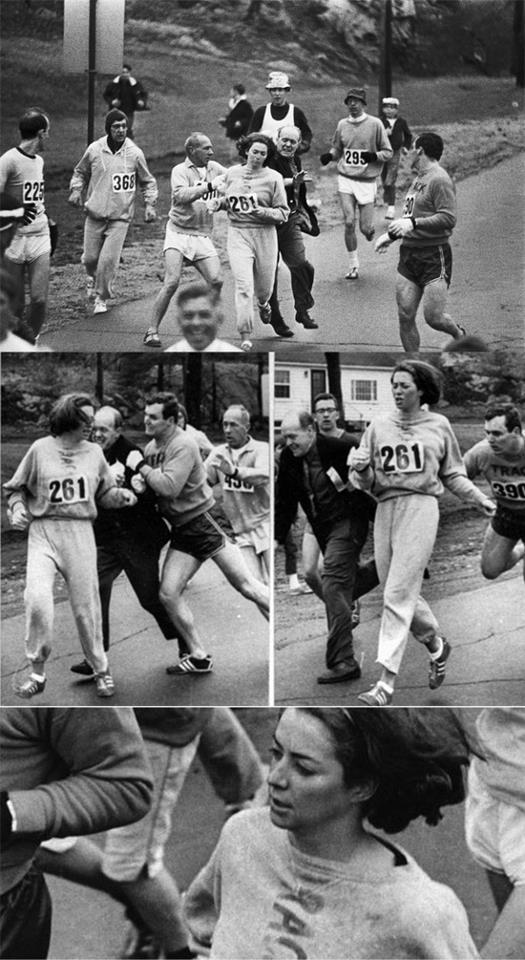
source
The governing body for track and field in the US was known as the Amateur Athletic Union (or the AAU). They responded to Kathy’s entry into the Boston Marathon by barring women from competing in the same event as men. To get around this rule, race organizers used a staggered starting time. Women’s races would start 10 minutes before the men’s race.
In 1972, six women, led by Nina Kuscsik (the eventual women’s winner), staged a protest when the starting gun went off for the women at the New York City Marathon. They sat down and held up protest signs. Nina’s sign read “The AAU is Unfair.” They then started running when the men’s race began. The AAU responded to this protest by adding 10 minutes to the finish times of the protesters. Nina showed up at the next AAU convention with a written civil rights complaint and a threat to sue. The rule was changed in response to this threat.
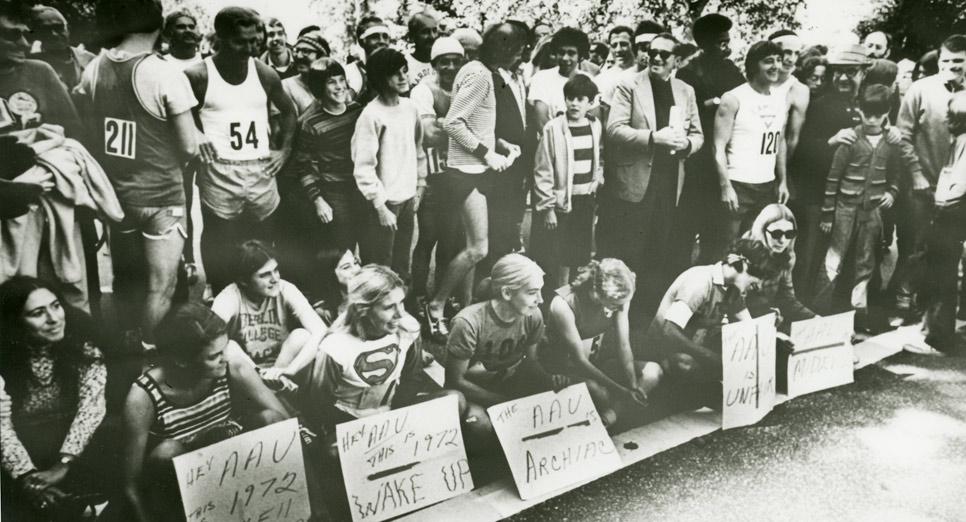
source
The Women’s marathon was not added to the Olympic events until 1984. The winner of that inaugural race was Joan Benoit in a time of 2:24:52. She defeated a number of running legends in winning this race.
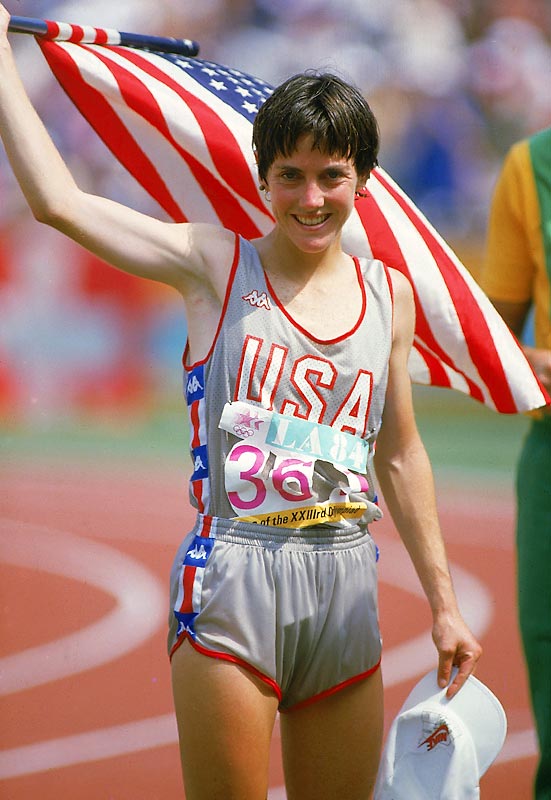
source
As a side note: Kathy Switzer returned to the Boston Marathon as an official female entrant in 1972. This was the same year I ran in the Boston Marathon. It was unseasonably warm that year and many runners (including myself) suffered the effects of the warm weather. Kathy started the race wearing tights and a long sleeve top. I recall a newspaper picture of her exiting a port-a-potty having stripped off some of her outer layers.
Sharon’s Two Cents
I love this photo:
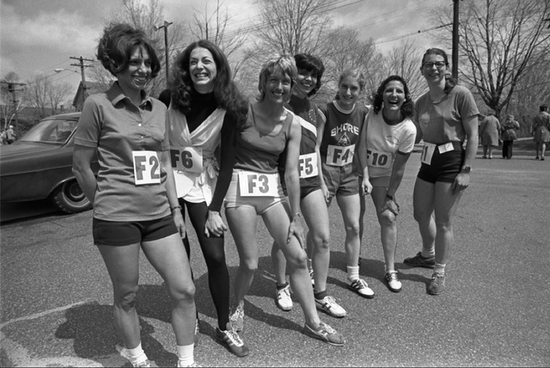
source
It’s the “Class of 1972” (minus one). As my dad mentioned above, 1972 was the first year that women were officially allowed to compete in the Boston Marathon. Jock Stemple didn’t make it easy, though. In order to compete, women had to meet the same qualifying time as the men: 3:30:00. Only eight women qualified that year. They are (from left to right) Nina Kuscsik, Kathy Switzer, Elaine Pedersen, Ginny Collins, Pat Barrett, Frances Morrison, and Sara Mae Berman.
Times certainly have changed. According to Running USA’s 2013 Annual Marathon Report, there were approximately 487,000 marathon finishers in 2012. And of those, 42% were women! Compare that to 1980 when only 11% of marathon finishers were women. I’m so happy to be a member of such an amazing group, and I’ll be proud to have my dad watch me cross the finish line in 5 days.

Do you want my dad’s two cents on your running question? Contact him at Dad{at}MommyRunsIt{dot}com. And for more great advice and information, be sure to check out his other posts!
 Albert is the proud father of Mommy Runs It’s owner Sharon Wilhelm. He has degrees in Nuclear and Mechanical Engineering and is a licensed Professional Engineer in Florida and is also certified as a Project Management Professional. He started running as a sophomore in high school (Oct 1964), and never stopped. In high school and college he was a middle of the pack runner. He hit his peak as a runner in the first 10 years after graduating college. Though never achieving a champion performance, he ran some decent times (5K – 16:58, 5 mi – 27:07, 6 mi – 33:00, 10K – 34:58, 13.1 mi – 1:36, 20 mi – 2:20:51, marathon – 3:37:48). Currently he runs primarily to maintain a level of physical fitness. He hopes that when he retires in a few years he will be able to increase his training and return to competitive running. His secret (not so secret any more) ambition is to be a high school track coach; not to produce champion runners, but to instill the love of running in these young people and pass on his experience.
Albert is the proud father of Mommy Runs It’s owner Sharon Wilhelm. He has degrees in Nuclear and Mechanical Engineering and is a licensed Professional Engineer in Florida and is also certified as a Project Management Professional. He started running as a sophomore in high school (Oct 1964), and never stopped. In high school and college he was a middle of the pack runner. He hit his peak as a runner in the first 10 years after graduating college. Though never achieving a champion performance, he ran some decent times (5K – 16:58, 5 mi – 27:07, 6 mi – 33:00, 10K – 34:58, 13.1 mi – 1:36, 20 mi – 2:20:51, marathon – 3:37:48). Currently he runs primarily to maintain a level of physical fitness. He hopes that when he retires in a few years he will be able to increase his training and return to competitive running. His secret (not so secret any more) ambition is to be a high school track coach; not to produce champion runners, but to instill the love of running in these young people and pass on his experience.
Teresa M. says
Wow, I can’t believe that a women’s marathon wasn’t in the Olympics until 1984.
susannabarbee says
This is great! I love this post. Now that I’ve gotten into racing, I love learning about it.
sharon says
Thanks! I only vaguely knew about these stories. I love that these women are in my dad’s generation of runners.
Ari Rabinowitz says
Al, it’s nice to know you are still running. I remember you doing that in JHS, too.
sharon says
He’s still fast, too. 🙂 Thanks for reading! My dad posts here for me regularly.
Albert Ugelow says
Wow, what a memory! There are probably only two people in the world who remember that I ran in JHS (me being the other one). I do not count those two years as part of my running career. We only ran 100 yards at a time and the training was not nearly .intense as the workouts I did at Tech.
tara pittman says
Thanks for the info. I am happy for the woman who paved the way for us.
sharon says
Me too. Pretty incredible stories. 🙂
Albert Ugelow says
Nice touch with the added photos. As an aside, I had a passing acquaintance with Nina Kuscsik. Her husband (at the time) occasionally ran with my running club. She did not run with us but did come to some of our team events.
sharon says
Very cool! I love this post – I’m glad mom suggested it for this week. It’s very appropriate with my run tomorrow and (of course) the marathon.
Brianne says
I love this! Girl Power! I love that one of the women sitting down in protest is wearing a Superman shirt. 🙂
sharon says
I didn’t even notice that. I love the photos too! Very cool stuff. 🙂 See you soon! xo